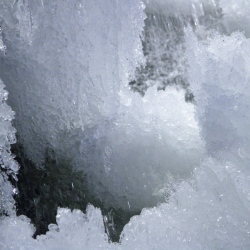
Released from a ship, the vehicle criss-crossed the underside of the floes, using upward-looking sonar to measure their shape. The researchers involved in the project tell the journal Nature Geoscience that the thickness of the pack ice was greater than they had been anticipated. But they also caution against making generalisations from limited sampling.
Antarctic sea ice at its peak extent can cover 20 million square km; the research team on the other hand looked at just six small boxes some 500m along the square. Nonetheless, the UK/US/Australia group got its proof-of-principle Autonomous Underwater Vehicle (AUV) into previously hard-to-reach places.
The hope is that this early demonstration will lead in the future to more effective means of assessing the volume of marine ice circling the White Continent. This topic has become one of the most interesting questions in climate science in recent years as its trend line grows in the face of a warming planet.
Deep-winter sea ice in Antarctica now stands at an all-time high, as measured in the modern satellite record – and researchers are trying to work out why it has not followed the sharp decline seen in the Arctic.
"Antarctic sea has been kind of the poor sister," says Jeremy Wilkinson from the British Antarctic Survey. "A lot of effort has gone into measuring Arctic sea ice, and we’re only now just scratching the surface of Antarctic sea ice, especially in respect to thickness," he told BBC News.
